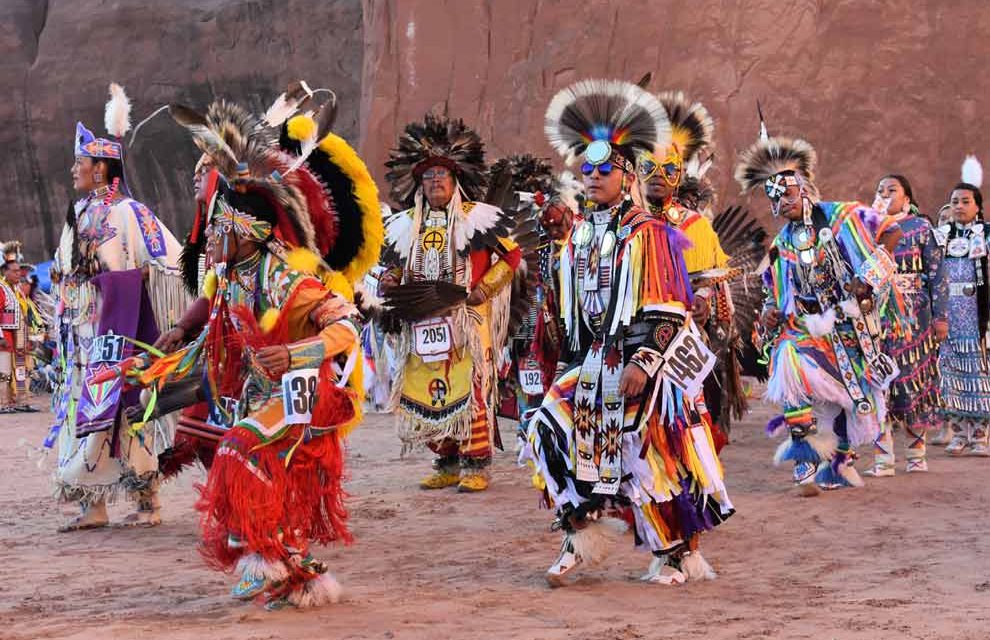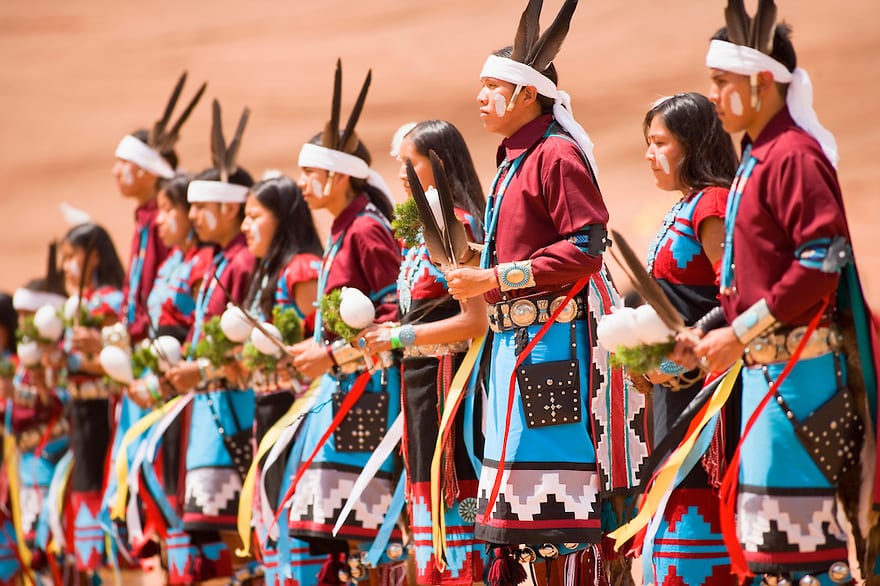
Guardians of Harmony: The Enduring Power of Navajo Protection Ceremonies
The vast, rugged landscapes of the Navajo Nation are more than just geographical features; they are a living tapestry woven with spiritual significance, ancient wisdom, and an enduring commitment to balance. At the heart of Navajo life lies Hózhó, a profound philosophical concept embodying beauty, harmony, order, and well-being. When this delicate balance is threatened – by illness, misfortune, or spiritual transgression – the Navajo people turn to their intricate and powerful ceremonial traditions, particularly those designed for protection. These ceremonies are not mere rituals; they are meticulously structured interventions, deeply rooted in a sophisticated worldview, aimed at restoring equilibrium and shielding individuals and communities from harm.
Unlike Western medical or psychological approaches that often isolate symptoms, Navajo protection ceremonies adopt a holistic perspective. They address the physical, mental, emotional, and spiritual dimensions of an individual, recognizing their inextricable link to family, community, and the natural world. The goal is not just to cure an ailment but to realign the individual with Hózhó, allowing them to "walk in beauty" once more.
The Role of the Hataałii: Custodians of Sacred Knowledge
Central to every Navajo ceremony is the Hataałii, or Singer/Chanter. These highly revered spiritual leaders are the custodians of an immense body of oral tradition, possessing encyclopedic knowledge of songs, prayers, stories, herbal remedies, and the precise choreography of each ceremony. Their training is arduous and lifelong, requiring years, often decades, of apprenticeship under an elder Hataałii. They must memorize vast sequences of songs and prayers, understanding their exact order, intonation, and meaning, as even a minor deviation can render a ceremony ineffective. The Hataałii acts as a conduit between the human world and the spiritual realm, drawing upon the power of the Holy People (Diyin Dinéʼe) to effect healing and protection. Their role is not simply to perform but to embody the wisdom and spiritual strength necessary to restore harmony.
Ceremonies of Restoration and Defense

Navajo ceremonies are categorized into various "ways," each addressing different types of imbalances or threats. While many ceremonies have protective elements, some are specifically designed to ward off evil, purify, or re-establish a secure spiritual state.
One of the most fundamental and encompassing is the Blessingway (Hózhóójí). This ceremony is unique in that it is not primarily a curing ritual but a preventative one, aimed at maintaining and restoring Hózhó within an individual, family, or community. It is performed for a multitude of reasons: to bless a new home, to prepare for a journey, to ensure a safe birth, to consecrate sacred objects, or simply to promote general well-being and good fortune. The Blessingway grounds individuals in their identity, reminds them of their sacred origins, and invokes blessings from the Holy People, thereby creating a protective shield of harmony around them. It reinforces the individual’s connection to the land, ancestors, and the cosmos, ensuring they walk a path of beauty and safety.
In contrast, the Enemyway (Anaaʼjí) ceremony directly addresses external threats, particularly those involving contact with foreign enemies, ghosts, or trauma experienced in conflict. Historically performed for warriors returning from battle, it is now often conducted for individuals suffering from what might be termed post-traumatic stress or "ghost sickness" – a spiritual contamination stemming from exposure to death or violence. The Enemyway is a complex, multi-day ceremony that involves ritual purification, songs, and prayers designed to remove the spiritual residue of the "enemy" and restore the individual’s inner peace and strength. A key element is a mock battle or "dance of the enemy" which symbolically expels the negative influences. The ceremony is not about hatred for an enemy, but about protecting the individual from the spiritual disruption caused by such encounters.
Another significant category is the Evilway (Hóóchxǫʼíjí) ceremonies. These are performed when an illness or misfortune is attributed to internal spiritual contamination, often resulting from violating taboos, improper contact with dangerous entities, or the malevolent influence of witches (’ánt’įį). Evilway ceremonies focus on drawing out the "evil" or "sickness" from within the patient, purifying them, and restoring their vitality. They often involve emetics, sweating, and specific prayers and songs to expel the negative forces. For instance, the Mountainway (a type of Evilway) might be performed for ailments believed to be caused by animals or plants, while the Navajo Windway might address sickness related to atmospheric phenomena. The focus is on re-establishing a proper relationship with the spiritual forces that govern these aspects of the natural world.
Elements of Ceremonial Power
Regardless of their specific purpose, Navajo protection ceremonies share several powerful elements:
-
Sandpaintings (Iikááh): These ephemeral artworks are perhaps the most iconic feature. Created meticulously on the hogan floor using colored sands, pulverized minerals, and charcoal, sandpaintings depict sacred beings, mythological events, and cosmic patterns. They are not merely art; they are sacred altars, portals through which the Holy People can enter and impart their healing and protective power. The patient sits on the sandpainting, symbolically absorbing its power and becoming one with the sacred imagery. Crucially, sandpaintings are destroyed at sunset or immediately after the ceremony, signifying the absorption of illness into the painting and its subsequent removal from the patient. This transient beauty underscores the temporary nature of illness and the constant renewal of Hózhó.

-
Songs and Prayers: The heart of any ceremony, songs and prayers are precise, lengthy, and chanted in specific sequences. They recount creation stories, invoke the Holy People, describe the patient’s condition, and articulate the desired outcome. Each song is a potent force, designed to attract positive energies and repel negative ones. The sheer volume and complexity of the oral tradition are astounding, with some ceremonies involving hundreds of distinct songs.
-
Herbal Medicines and Offerings: Indigenous plants, gathered with respect and specific prayers, are integral. They are prepared as teas, poultices, or ritual baths, serving as physical conduits for spiritual healing. Offerings of corn pollen (tááʼdínéeshgįįzh), sacred tobacco, or other natural materials are made to the Holy People, demonstrating reverence and facilitating communication with the spiritual realm.
-
Ritual Objects and Sacred Bundles: The Hataałii utilizes a variety of sacred objects, often kept within a personal ceremonial bundle, passed down through generations. These might include eagle feathers, sacred stones, rattles, and other items imbued with spiritual power, each playing a specific role in guiding the ceremony and channeling protective energy.
-
The Hogan: The traditional Navajo dwelling, the hogan, is itself a sacred space, a microcosm of the universe. Its circular shape and orientation to the cardinal directions create an ideal environment for ceremonial work, providing a sense of security and spiritual containment.
Modern Challenges and Enduring Resilience
In the 21st century, Navajo ceremonial traditions face significant challenges. The rigorous training required to become a Hataałii is daunting, and fewer young people are committing to this demanding path. The decline in the Navajo language, the increasing influence of Western culture, and the integration of modern medicine also pose threats to the perpetuation of these ancient practices.
However, the resilience of the Navajo people and their deep connection to their heritage ensure these ceremonies continue to thrive. Efforts are underway to preserve and transmit this knowledge, including programs at Diné College and dedicated community initiatives. Many Navajo individuals integrate traditional ceremonies with Western medical care, recognizing that each offers a distinct but complementary path to healing and well-being. For them, a doctor can treat a broken bone, but a Hataałii can mend a fractured spirit and restore Hózhó.
The traditional Navajo ceremonies for protection are more than cultural artifacts; they are living expressions of a profound spiritual philosophy. They offer a comprehensive framework for understanding and navigating the complexities of life, illness, and human experience. By engaging with these sacred practices, individuals are reminded of their inherent connection to the universe, their ancestors, and the enduring power of harmony. In a world often marked by discord and imbalance, the Navajo way of "walking in beauty" offers a timeless lesson in the profound wisdom of holistic protection, a testament to the enduring strength of a people deeply rooted in their sacred traditions.


